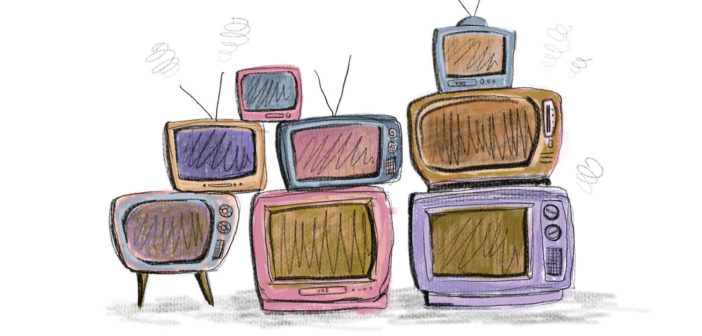When the beloved television show “Firefly” was canceled after a fleeting 14 episodes in 2003, fans quietly raged. For months after the abrupt ending, devotees wrote lengthy letters, pleading with executives to bring Malcolm Reynolds and the rest of his spaceship’s crew back to their television screens.
The Sci-Fi/Western drama, created by Joss Whedon, “Buffy The Vampire Slayer,” aired on Fox for a brief season and was then unceremoniously scrapped by the network due to less than stellar ratings, according to the Hollywood Reporter.
“The people who loved it, loved it so much that they protested, then they brought people back to do a movie,” said Professor of Communication Steve Macek. “People who love ‘Firefly,’ really, really love ‘Firefly.’”
The “Firefly” cinematic spinoff was the 2005 film “Serenity,” which brought the cast of the cult-classic show back together for a proper farewell. Fans, who collectively referred to themselves as “Browncoats,” reveled in the momentary return.
“There have always been fans of particular shows that have always kind of found each other,” said Macek. “There’s this impulse for fans to join together and connect over their shared love of a particular program.”
A similar phenomenon occurred earlier this year to an inarguably more extreme degree. When Netflix announced its cancelation of “The OA” after two seasons, fans immediately expressed their outrage. According to Refinery29, one woman even began her own hunger strike outside of Netflix’s office in Hollywood to advocate for the show’s revival.
Massive billboards in Times Square were paid for by supporters through crowdfunding, according to the Los Angeles Times, and lively flash mobs were organized outside of Netflix’s NYC building.
So why is it that so many people are left seemingly so bereft after their favorite shows get the axe? After all, it’s only television. The characters aren’t our friends. The stories aren’t our own. The imagined worlds are unfamiliar and often unexplored. What’s the big deal?
But America and television are irreversibly intertwined. According to The Atlantic, the typical American home views an average of eight hours of television per day. It’s no wonder that when a show is swiftly yanked from the air, the aftermath for superfans is heavy.
“I think that with really relatable characters, people can identify with the stories,” said Assistant Professor of Communication and Media Studies Susan Carlson. “They can connect with those characters, and it’s almost like an escape.”
Carlson recalls being mildly devastated when “My So-Called Life” was canceled in the mid-90s after one season. She was a freshman in high school then and the show seemed to speak to her adolescent worries in ways that no other television show, Hollywood film or piece of art did at the time.
“The characters were going through this change — going from junior high to high school,” said Carlson. “I connected with Claire Danes, just understanding what it was like to be a teenager.”
Carlson needed to savor every last episode in existence. Once MTV started rerunning the only season of the series, she stockpiled tapes of every “My So-Called Life” moment in her living room.
“Their promo would talk about how ABC or the critics in general felt that the show was before its time,” said Carlson. “Like it was too raw and real for primetime television. So, MTV picked it up just to replay the episodes.”
Leah Erb, ’20, returns to shows she used to love like they’re old pals. Programs from her childhood still make her feel the way she did when she first watched them.
“Imagine all of the people that still reference ‘Drake & Josh’ and ‘The Office,’” said Erb. “Even if time has passed, and it’s an older show, it’s still relevant.”
When “The Mindy Project” was canceled on Fox in 2015 after three seasons, Hulu gave the program a second life on their platform until 2017, when Mindy Lahiri said goodbye to her loyal viewers. But Erb can think of so many shows she loved that didn’t get the sendoff she felt they deserved.
“A lot of the stuff that I watched just wasn’t popular enough to get another season,” said Erb. “And with a lot of anime stuff, most of the time, they get 12 episodes and if people like it, they keep going, and if not, they just stop.”
Macek believes one of the greatest injustices in television history, however, was the cancellation of “Dr. Quinn, Medicine Woman,” a ’90s drama series starring Jane Seymour. The problem wasn’t necessarily the lack of viewership, according to a report made by Deseret News in 1998 (the year the show was pulled,) but rather who exactly was tuning in.
“CBS didn’t like the demographics that it was attracting because it was popular with women over the age of 40,” said Macek. “They were not as desirable a demographic for advertisers as men and women, like, 18 to 24, which was the target.”
Dr. Quinn received a made-for-TV movie in 1999, and then disappeared from popular culture entirely. The show is now available to stream on Amazon Prime, potentially reaching viewers that it simply couldn’t in its first run. And perhaps that means that no series is ever truly canceled at all. To the audiences with whom they have connected, these shows are effectively eternal.
“I think we develop a relationship with television when we’re very young,” said Macek. “It’s something we consume at home in our domestic spaces, and it’s sort of enmeshed in the rhythms of our lives.”

